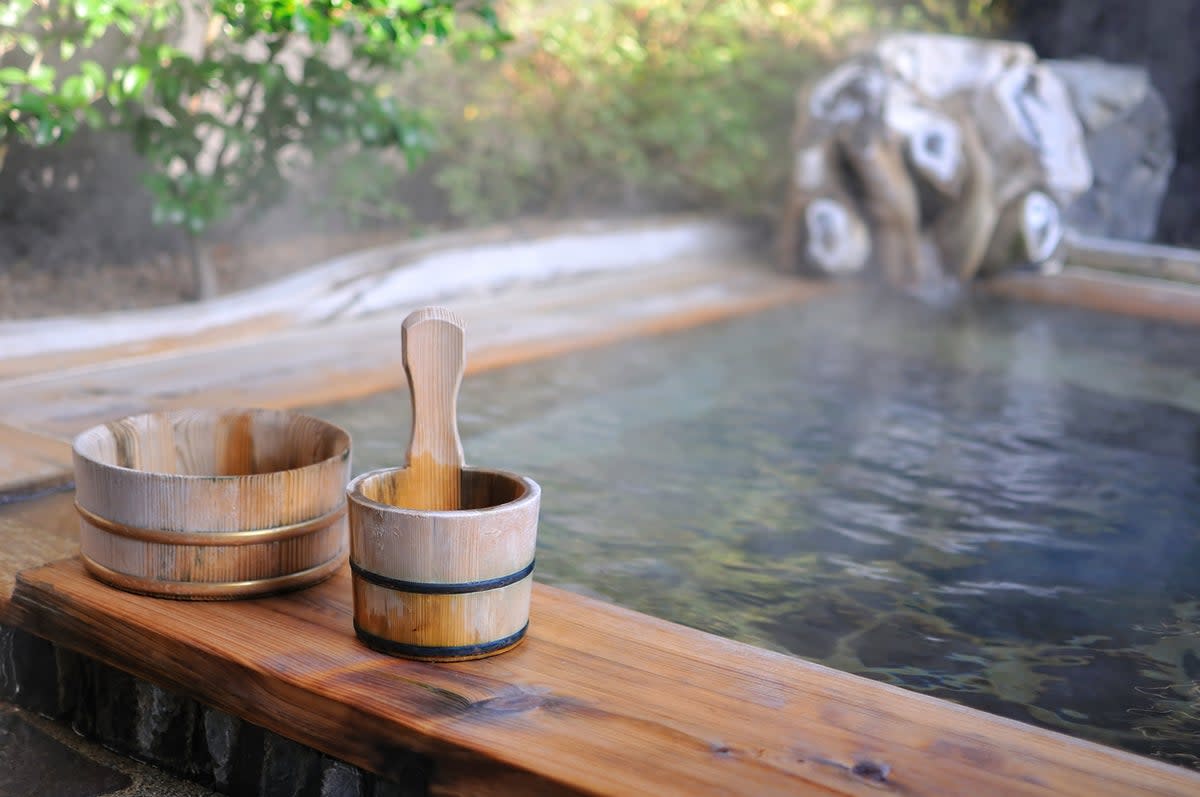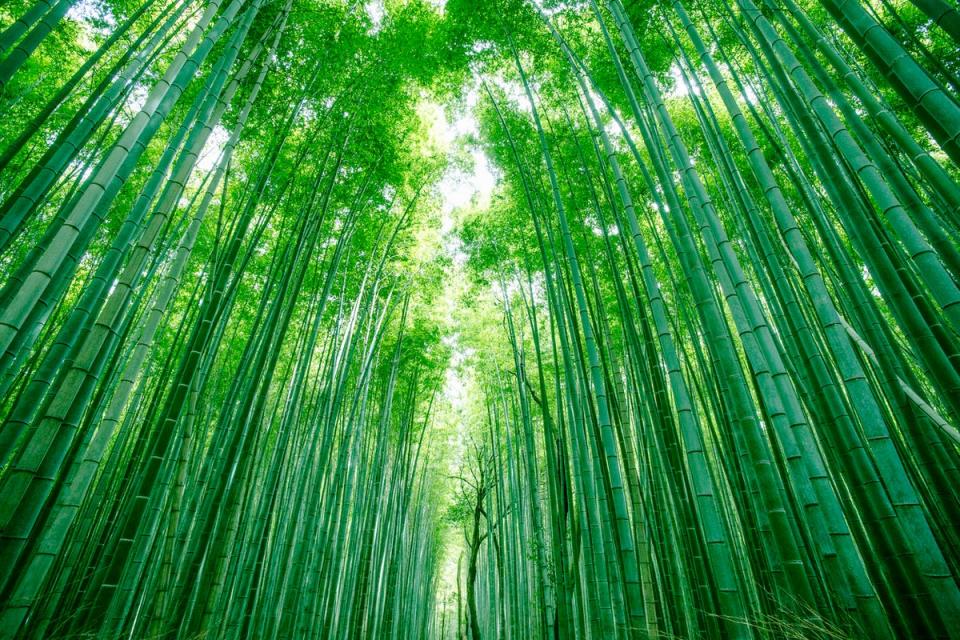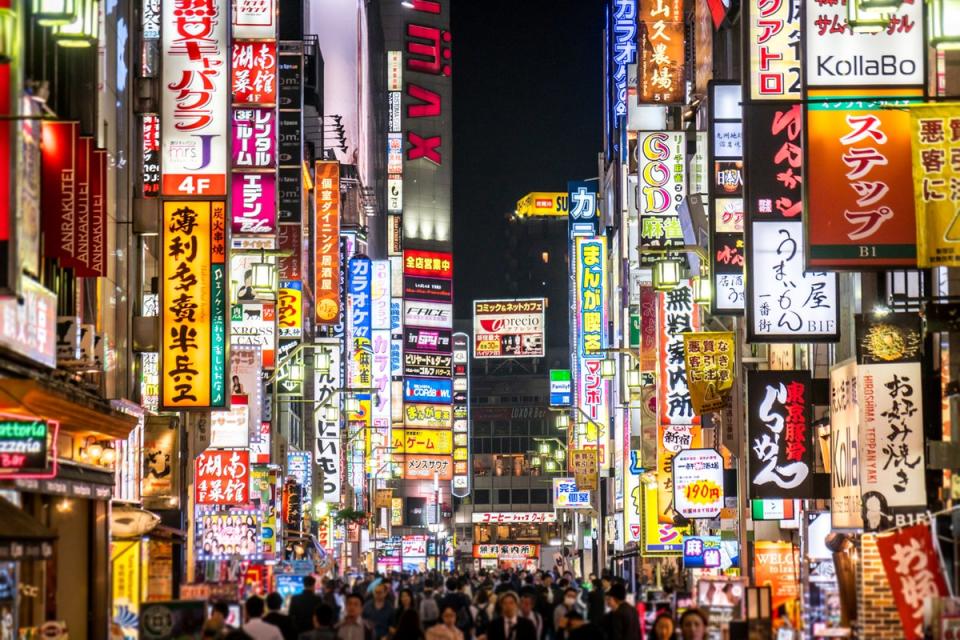Still off-limits: Why I can’t wait to get back to Japan

There’s this one morning that I used to meditate on, when we were in the thick of the lockdowns. I wake up with the sunlight piercing a paper-thin blind. Still bleary with sleep, I pull on a crisp cotton robe over crisp cotton pyjamas, scooping slider-like slippers onto each foot. With not another soul in sight, I pad down a series of steps cut into hefty rocks, slivers of bamboo tickling me as I go, the sunrise just peeking above the horizon. I can hear the waves below. Reaching the bottom of the boulder-steps, I can see it: a sculpted, sunken pine tub, filled with water, its puff of thick steam forming a luminous halo in the amber first light.
Don’t you feel better already? And this was no Covid fever dream – it was a memory. The steps led from a chic little ryokan (a traditional inn) in Atami, on the east of Japan’s Izu peninsula. Taking the hour-and-a-half train journey from Tokyo, I’d visited it in 2016, relishing the opportunity to shrug off all plans, decisions and day-to-day stresses and submit to the way of the ryokan.
At these hyper-traditional, fully catered boarding houses – which date back to the 1600s – you switch your holiday clothes for soft tunics and kimonos, take off your shoes, and sleep on tatami mats. At dinner time, you’re served whatever multi-course creation the chef is making that day. Many have hot-spring baths where you participate in Japan’s ancient onsen bathing ritual; mine had a delightful women-only, sea-view tub, where little Japanese girls giggled at my pinkness as the heat warmed my bloodstream.
I had fully intended to go back to Japan in 2020 – but the pandemic had other plans. Having visited during crisp, cold, sunny January the first time, I had fallen for blue skies reflected in Tokyo skyscrapers, restaurants that do one thing and do it really, really well, and the gleaming efficiency of the country’s bullet trains. For my second trip I was eyeing autumn, when the country’s ornamental maple trees turn a fiery red and the hiking trails are ripe and cool for exploration. As we waited out those early Covid weeks, I vowed I’d go just as soon as the pandemic finished, in autumn 2020. Autumn 2021. Autumn 2022?

Following a strict travel shutdown, when borders were sealed to nearly all visitors for more than two years, Britons were finally been allowed back in on a group tour in early June, with self-guided tours to be allowed from 7 September – but all international tourists must still visit on an organised tour arranged by an operator. Last week the Japanese government confirmed that they’ll drop PCR testing for triple-vaccinated visitors from early September, too; but the strict tours-only rule will stay in place for the time being. It’s frustrating. I want to do what I did last time: spend a few hedonistic days in Tokyo, one of my favourite cities on the planet, then set off into a different stretch of rural beauty, culture and cuisine – perhaps walking the Nakahechi route on the southern Kii peninsula, or soothing my soul with the rushing waters of Oirase Gorge in the far north.
What I don’t want, after three years of rules and restrictions, is to be locked into the traditional tourist trail, or find myself unable to tweak and tailor plans at the last moment. We still don’t know when Japan’s border rules will relax fully, and with such minor rule changes spread into autumn 2022, it’s fair to say the authorities are staying cautious.
Japan is my travel fantasyland. Before I went, I’d expected to like it – being an established sushi fan, enthusiastic karaoke-goer and a lover of big, complex cities, I already felt a strong connection to it. But on that first trip, I found there was so much more to adore: how safe it is, both for yourself and your belongings; the peaceful spirituality of its temples; the immaculate politeness and surprising friendliness of the locals; the endless beauty of its rambling, remote temple complexes.
The bamboo forests have a surreal, Alice in Wonderland quality, and dainty little coffee and sweet shops hold endless matcha-flavoured, Play-Doh-squishy delights. The only thing I could really fault Japan on is not giving over full control of the soy sauce dispenser (here you’ll be having the sushi as the chef intended – with a tissue-thin layer of the salty stuff to eke out, and not a drop more).

For a spa fan, Japan’s onsen – ritual baths like the one I pottered down to in my lockdown daydream – are even better than you picture them. There’s a whole ceremonial scrub-down that should take place before you enter, with power-pressure taps, brushes and buckets awaiting you at the side of the steaming water. Whole spa towns are based around onsen culture, the most traditional ones being fed by natural, mineral-rich hot springs. At many bathing spots, pools are separate for men and women, and they’re traditionally taken completely naked – the ultimate culture shock (and feeling of freedom) for us tightly laced Brits.
Yes, it’s expensive. But it’s the one big, ambitious, long-haul adventure I recommend to everyone – you get so much bang for your buck. For the sheer, head-turning strangeness of the culture shock, yes – but also for the street style, art, architecture, innovation, heartfelt hospitality, and locals who will literally walk you to the door of the place you’re walking in circles looking for.
Tokyo is heaven for fans of urban life, but don’t come all this way just for the capital – make sure you get at least one bullet train, and get out to see at least one patch of glorious countryside. The combination of pulse-quickening city life and pulse-calming nature is unbeatable, and I can’t get back to it soon enough. If I’m lucky, I may even find those rural ryokan still hushed, not quite back to full, and fly home with an even better morning to meditate upon.

 Yahoo News
Yahoo News 
